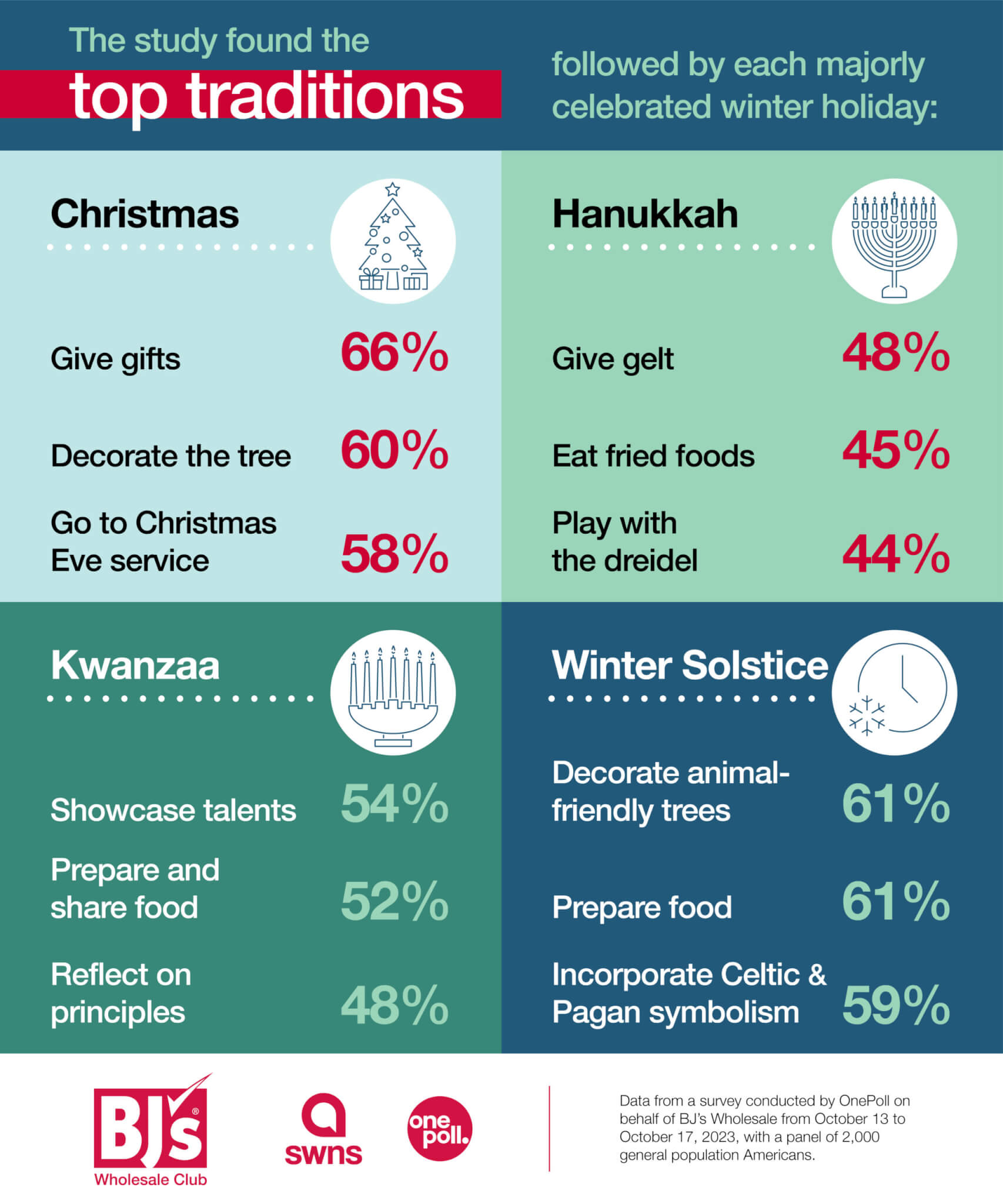NEW YORK — A majority of parents believe their kids “need” to follow the same holiday traditions they grew up with, according to a new survey. The poll of 2,000 American parents who celebrate winter holidays reveals that 78 percent of parents believe it’s important to share traditions they grew up practicing with their own children and for 73 percent, giving gifts to their children is a large part of their holiday traditions.
For kids, receiving gifts is the most exciting part of the holidays (22%), beating out traditions like visiting Santa (20%) or decorating the house (20%).
Over half (53%) of parents who celebrate Christmas say they start placing gifts under the tree two weeks in advance. Forty-six percent say gifts are more exciting to them now than they were when they were kids. Another 25 percent say they’re just as excited now as in their childhood. This is cemented by the fact that 77 percent of parents agreed the holiday season is just as magical now as it was when they were kids.
Commissioned by BJ’s Wholesale Club and conducted by OnePoll, the survey finds that during the holiday season, 56 percent look forward to spending time with their family and friends. Seventeen percent say they also look forward to gift shopping, either for themselves or for others. Over half (52%) spend the most on gifting others, while one in three spend the most on gifting themselves.
Forty-two percent spend the most amount of their time shopping for gifts during the holidays — more than cooking (34%) and grocery shopping (27%).
“We understand how much our members treasure traditions,” says Tim Morningstar, Chief Membership Officer for BJ’s Wholesale Club, in a statement. “It’s about the memories that are passed along from one generation to another and celebrated each year.”

The survey also finds the top traditions followed by each majorly celebrated winter holiday: Christmas, Hanukkah, Kwanzaa, and Winter Solstice. Overall, holiday traditions seem to follow people from their childhood to parenthood.
As kids, many Christmas celebrators follow traditions such as giving gifts (71%) and decorating the tree (69%). From children to adults, these traditions continue as the years go by. Adults also still give gifts (66%) and decorate the tree (60%).
Kids who celebrate Hanukkah played with the dreidel (49%) or ate dairy (49%). As adults now, they give gelt (48%) and eat fried foods (45%).
Children who grew up celebrating Kwanzaa would reflect on principles (56%) and prepare and share food (54%). Now as adults, they showcase talents (54%) and prepare and share food (52%).
Winter Solstice celebrations were alike for both kids and adults: kids decorate animal-friendly trees (65%) and make art (59%). As adults, they continue to decorate animal-friendly trees (61%) but also prepare food (61%). Results also show that for many people across different holiday cultures, food is central to their traditions.
Those who celebrate Christmas tend to feast on turkey (55%), cake (36%) and steak (36%). Recognizers of the Winter Solstice are likely to eat cake (29%), fish (24%), and casseroles (24%).
Meanwhile, Hanukkah and Kwanzaa celebrations share the same appreciation for cake (28% and 25%, respectively), pies (26% and 24%, respectively), and casseroles (24%, equally).
Survey methodology:
This random double-opt-in survey of 2,000 American parents who celebrate a winter holiday was commissioned by BJ’s Wholesale Club between October 13 and October 17, 2023. It was conducted by market research company OnePoll, whose team members are members of the Market Research Society and have corporate membership to the American Association for Public Opinion Research (AAPOR) and the European Society for Opinion and Marketing Research (ESOMAR).

